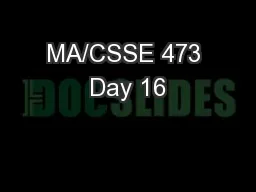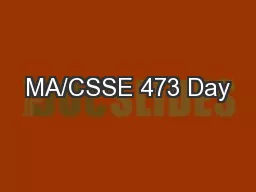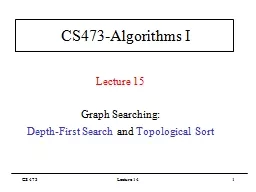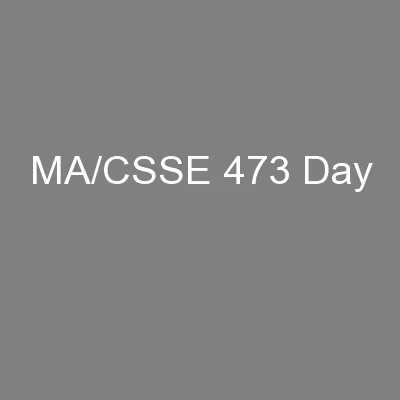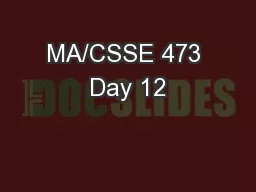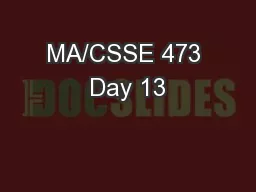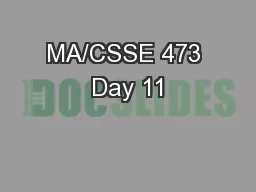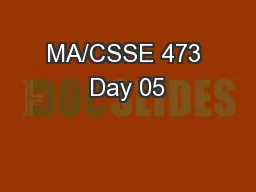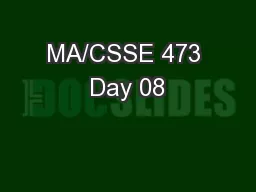PPT-MA/CSSE 473 Day 16
Author : marina-yarberry | Published Date : 2017-12-03
Answers to your questions Divide and Conquer Closest Points Convex Hull intro Exercise from last time Which permutation follows each of these in lexicographic
Presentation Embed Code
Download Presentation
Download Presentation The PPT/PDF document "MA/CSSE 473 Day 16" is the property of its rightful owner. Permission is granted to download and print the materials on this website for personal, non-commercial use only, and to display it on your personal computer provided you do not modify the materials and that you retain all copyright notices contained in the materials. By downloading content from our website, you accept the terms of this agreement.
MA/CSSE 473 Day 16: Transcript
Download Rules Of Document
"MA/CSSE 473 Day 16"The content belongs to its owner. You may download and print it for personal use, without modification, and keep all copyright notices. By downloading, you agree to these terms.
Related Documents

